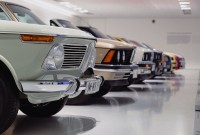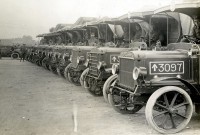- Home
- Business Processes
- Industry Knowledge
- Aerospace Industry
- Automotive Industry
- Banking Domain
- BFSI Industry
- Consumer/ FMCG Industry
- Chemicals Industry
- Engineering & Construction
- Energy Industry
- Education Domain
- Finance Domain
- Hospitality Domain
- Healthcare Industry
- Insurance Domain
- Retail Industry
- Travel and Tourism Domain
- Telecom Industry
- Leadership Skills
- eLearning
- Home
- Industry Knowledge
- Automotive Industry
- Automotive Industry: The Key Industry Drivers
Automotive Industry: The Key Industry Drivers
There are four key business drivers that impact the automotive industry: economic conditions, consumer preferences, government, and technological advances. Globalization is also influencing the industry to a great extent. In this article, we will discuss in detail each of these business drivers.
Economic Conditions:
The first key driver is economic conditions. When economic conditions are favorable, people are more likely to purchase new vehicles giving momentum to the industry. The slowdown in economic output leads to reduced consumer and business confidence and levels of vehicle consumption go down.
Automotive manufacturers need to plan capacity to achieve economies of scale. Companies plan their capacities based on their sales predictions which are totally dependent on economic cycles. The capacity issue has a strong influence on industry economics as vehicle prices are calculated on forecast capacities and reduced capacity means higher unit costs. Vehicle makers, therefore, get heavily impacted due to economic conditions.
Consumer Demand and Interests:
The second key driver is consumer interest, preferences, and demand. There is a growing demand for more choice. Volume production may become similar to that for premium cars, with a greater number of vehicles being made to order on the basis of a multi-option choice. The market for niche vehicles is growing, as consumers demand more variation of body shape and styling. This has led to a variety of body shapes being constructed on standard platforms.
There is an increased awareness of occupant and pedestrian safety, and consumers also look for greater fuel economy, exemplified by the growing rise of fossil fuel prices. Consumers is becoming more aware of specifications and looking for the inclusion of more on-board electronics and telecommunications systems. Automobile safety is tremendously important to consumers in all markets and consumers are willing to pay more for vehicles with safety features.
Globalization:
The third key driver is globalization and global industry influences. Today, the modern global automotive industry operates in a globally competitive marketplace. Globalization of the automotive industry has been greatly accelerated during the last half of the 1990s due to the construction of important overseas facilities and the establishment of mergers between giant multinational automakers. The world's largest automobile manufacturers invest in production facilities in emerging markets in order to reduce production costs. Automakers have merged with, and in some cases established commercial strategic partnerships with other automobile manufacturers, enabling them to expand in overseas markets.
Increasing global competition amongst the global manufacturers and positioning within foreign markets has divided the world's automakers into three tiers, the first tier being GM, Ford, Toyota, Honda, and Volkswagen, and the two remaining tier manufacturers attempting to consolidate or merge with other lower-tier automakers to compete with the first tier companies.
Technological Innovations:
The fourth key driver influencing the automotive industry significantly is Technology. Automotive companies seek to take advantage of sophisticated technology to address the competitive pressure and to meet increased customer expectations on quality and cost. Technological advances help them add value to their vehicles and offset the squeeze on costs and profit margins. Technology also helps them meet the demands of environmental legislation. It is through technology that manufacturers are able to address consumer demands for increased safety and sophistication.
Other innovations that consumers are interested in include features that improve navigation, like GPS, and features that enhance entertainment, including satellite radio and in-car access to digital music.
In terms of the vehicle, the innovations that are likely to be in demand are more electronics and telematics, move to a 42-volt electrical system, safety improvements, electrically controlled steering, braking, ABS, and suspension. There might be the continued development of electric, hybrid, and fuel cell drives, especially for city cars and fleet vehicles.
Features likely to be introduced could be sophisticated route guidance, inter-model route planning, lane guidance, and proximity radars for speed control and warning systems. The consumer in this sector always demands innovation and technology-driven innovations such as fuel-efficient, safer, more comfortable low-emission vehicles will shape the future of the industry.
Government & Regulations:
The fifth key driver of the automotive industry is government. The legislation is a major driver of the industry; emissions and recycling legislation have a strong impact on both on-vehicle technologies and construction. In many countries, governments have imposed strict environmental regulations dealing with fuel economy and emissions control on auto manufacturers. These environmental legislations vary in different countries and define standards that are compulsory for all vehicles sold in those countries. This has a huge impact on global auto manufacturers as they must keep updating the products they sell in different parts of the world to comply with these regulations. This can add significantly to manufacturing costs.
Suggested Reading and Resources on Automobile Domain
| Supply & Value Chain | Industry Sectors | The Competitive Landscape |
| Industry Drivers | History of Automotive Industry | Overview of Automotive Industry |
Related Links
You May Also Like
-
Automotive Industry: Industry Sectors
In this article, we will discuss the business sectors of the automotive industry. We will understand the major sectors in the automotive industry and the role they play and their impact on the industry. The major business sectors of the automotive industry are suppliers, auto-manufacturers, and auto dealerships.
-
Automotive Industry: The Competitive Landscape
In this article, we will discuss the top key competitors in the automotive industry. This will help you gain an understanding of the major players in the automotive industry. We will start with a brief history of the major players, their competitive advantage, and financial profiles in this section.
-
Overview of Automotive Industry
The first automobile with a petrol engine was built in 1885 and soon the figure for total cars in the world will be touching a mark of 1000 million cars and light trucks. This article presents a quick overview of what we mean with the Automative Industry and how it started and what is the scale of this industry today.
-
Automotive Industry Supply & Value Chain
Most of the automotive manufacturers employ a business model that demands collaboration between different assemblers and cadre of parts suppliers with a lean, flexible, just-in-time (JIT) assembly process. In this article, we will discuss the business model of a typical automotive manufacturer and the various stages from planning to final retailing of the product.
-
Automotive Industry: The Key Industry Drivers
There are four key business drivers that impact the automotive industry: economic conditions, consumer preferences, government, and technological advances. Globalization is also influencing the industry to a great extent. In this article, we will discuss in detail each of these business drivers.
-
History of Automotive Industry
The study of the automotive industry is inherently interesting: it is massive, it is competitive, and it is just a few years older than a century. It is expected to undergo major changes in recent times due to the impact of globalization, increased regulations because of environmental concerns, and rising fossil fuel prices due to decreasing oil reserves.
Explore Our Free Training Articles or
Sign Up to Start With Our eLearning Courses

About Us
Learning
© 2023 TechnoFunc, All Rights Reserved






